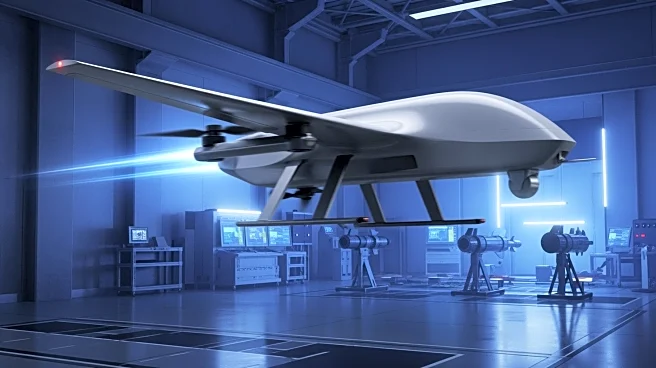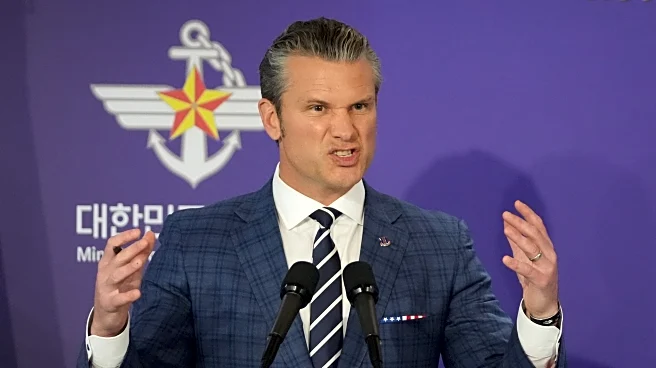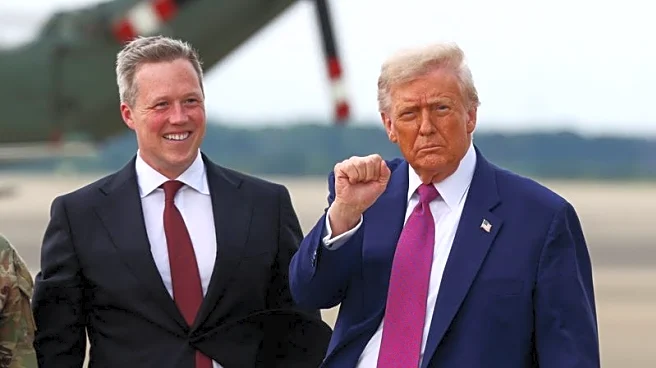What's Happening?
Defense Secretary Pete Hegseth announced a significant shift in the Pentagon's approach to military procurement, emphasizing speed over cost in weapon acquisition. Speaking at the National War College,
Hegseth outlined plans to transform the acquisition system to operate on a wartime footing, aiming to rapidly accelerate the deployment of military capabilities. This change is intended to move away from the traditional focus on delivering perfect, albeit expensive and delayed, products. Instead, the Pentagon will prioritize quicker delivery of less ideal solutions, which Hegseth argues are more beneficial in the current geopolitical climate. The shift comes amid ongoing conflicts, such as Russia's war in Ukraine, where inexpensive drones have proven effective against more advanced military technology.
Why It's Important?
The Pentagon's new procurement strategy could have significant implications for the U.S. defense industry and military readiness. By prioritizing speed, the military may be able to respond more swiftly to emerging threats, potentially enhancing national security. However, this approach may also lead to less transparency and increased risks, as faster production could result in systems that do not meet all operational requirements. The shift could impact traditional defense contractors, who may face increased competition from innovative companies willing to assume greater risks. Additionally, the strategy aims to boost U.S. arms sales to allies, potentially strengthening international partnerships and the domestic military industrial base.
What's Next?
The Pentagon's new strategy will likely lead to changes in the National Defense Authorization Act, as indicated by Republican Sen. Roger Wicker. The focus on speed may require adjustments in regulatory frameworks to facilitate quicker procurement processes. Defense contractors will need to adapt to the new priorities, potentially altering their business models to meet the demand for rapid delivery. The Pentagon's move away from traditional contractors could also lead to increased scrutiny and oversight to prevent fraud and ensure accountability. As the strategy unfolds, stakeholders will be watching closely to assess its impact on military effectiveness and industry dynamics.
Beyond the Headlines
The shift in procurement strategy raises ethical and operational questions about the balance between speed and quality in military acquisitions. While rapid deployment can enhance readiness, it may compromise the effectiveness and reliability of military systems. The potential for increased fraud and abuse highlights the need for robust oversight mechanisms. Additionally, the emphasis on speed may influence the culture within the defense industry, encouraging innovation but also challenging established norms and practices. The long-term implications of this strategy will depend on its execution and the ability of the Pentagon to manage associated risks.













